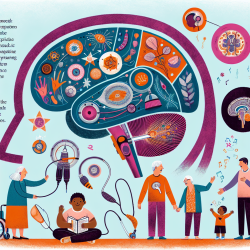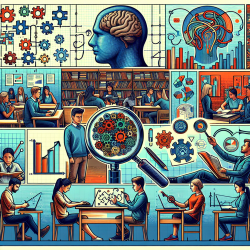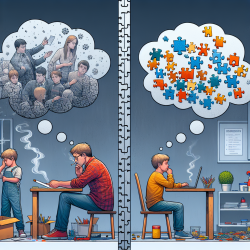Exploring Brain Changes in Children with Hearing Loss
Understanding the microstructural alterations in the brains of children with congenital sensorineural hearing loss (SNHL) can significantly impact therapeutic approaches and outcomes. A recent study titled Diffusion Kurtosis Imaging of Microstructural Alterations in the Brains of Paediatric Patients with Congenital Sensorineural Hearing Loss explores this topic using Diffusion Kurtosis Imaging (DKI). This blog will guide practitioners on how to leverage these findings to improve therapeutic outcomes for children with SNHL.
Why DKI is Important
Diffusion Kurtosis Imaging (DKI) is a powerful tool that offers comprehensive measurements for evaluating age-related microstructural changes in both white and grey matter. Unlike conventional imaging techniques, DKI can detect subtle changes in brain tissue, providing insights into the developmental delays often seen in children with SNHL.
Key Findings from the Study
- The study involved 72 pediatric SNHL patients and 38 age-matched healthy volunteers.
- Significant differences in Mean Kurtosis (MK) and Fractional Anisotropy (FA) values were observed, particularly in children older than three years.
- These differences were more pronounced in older children, indicating that age plays a crucial role in brain development in SNHL patients.
- Children with brain lesions showed more significant decreases in FA and MK values, suggesting a link between microstructural changes and developmental delays.
Implications for Practitioners
For practitioners, these findings underscore the importance of early intervention. By understanding the microstructural changes in the brains of children with SNHL, practitioners can tailor interventions to address specific developmental delays. Here are some practical steps:
- Early Diagnosis: Utilize advanced imaging techniques like DKI to identify brain changes early.
- Customized Therapy Plans: Develop individualized therapy plans that consider the specific brain regions affected.
- Monitor Progress: Regularly assess the child’s progress using both clinical evaluations and imaging to adjust therapy as needed.
- Family Education: Educate families about the importance of early intervention and the role of imaging in monitoring brain development.
Encouraging Further Research
While this study provides valuable insights, it also highlights the need for further research. Larger studies could confirm these findings and explore additional factors influencing brain development in SNHL patients. Practitioners are encouraged to stay informed about ongoing research and consider participating in studies to contribute to the growing body of knowledge in this field.
To read the original research paper, please follow this link: Diffusion Kurtosis Imaging of Microstructural Alterations in the Brains of Paediatric Patients with Congenital Sensorineural Hearing Loss.










